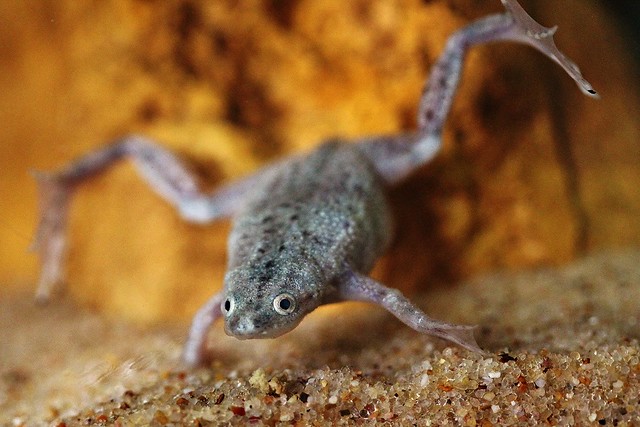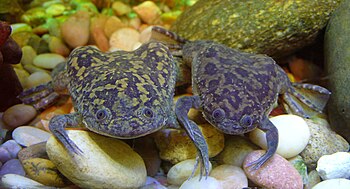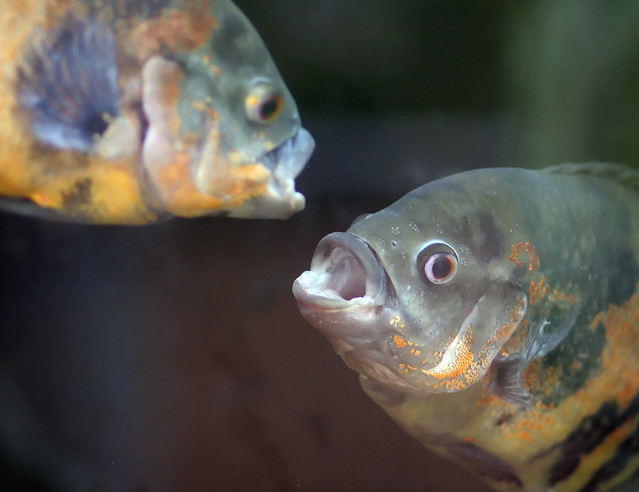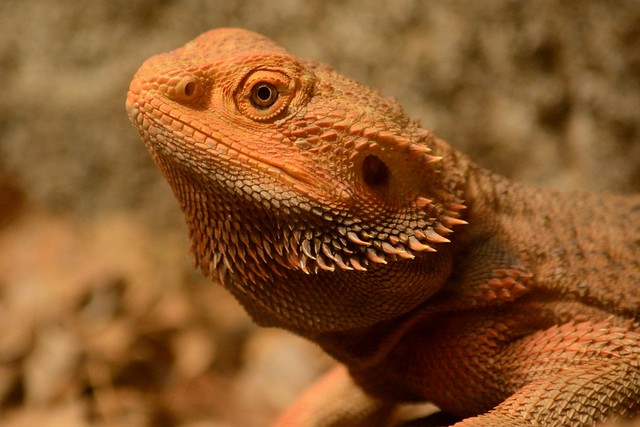 |
| Photo by graysonrenee68 |
African Dwarf and Clawed Frog Similarities
Before we get started with the differences between the two types of frogs, we'll first get an understanding of the similarities of them. Clawed frogs and dwarf frogs are both fully aquatic. They're capable of living underwater without the need to leave the water. These critters also look very similar which often causes people to mistake one type for the other which can lead to problems in an aquarium. Both share similar behaviors such as hanging at around the bottom of the tank while occasionally touching the water's surface.
 |
| African clawed frogs (Xenopus laevis) (Photo credit: Wikipedia) |
African Dwarf and Clawed Frog Differences
There are quite a few differences between the two. Knowing these differences can be a life or death matter when stocking your aquarium. Miniature frogs grow much smaller than the clawed version with the largest growing a little over two inches. Clawed species have been known to grow as large as eight inches. Only clawed versions are available in an albino form. While both types of frog are equipped with webbed feet, only the dwarf has webbed hands. The eyes on an African Dwarf frog are located on the side of its head whereas eyes of a clawed species can be found on top of the frog's head.
While habitat requirements are somewhat similar for both frogs, there are a few differences. For instance, clawed frogs require a bigger tank since they grow so much larger. The diets of these critters are also similar in the fact that they're both carnivores. However, clawed frogs are many dangerous predators in a home aquarium. They're capable of eating much larger creatures such as small crayfish and goldfish. Never house African dwarf frogs with African clawed frogs! The much larger clawed frog will kill and eat the smaller dwarf frog. The clawed frog is also known to be a tad more aggressive than the miniature which is normally peaceful.
Afterthought
Both types of aquatic critters are extremely entertaining and can be very interesting pets. Clawed frogs are illegal in some states so some people will have to settle for the miniature type which isn't a bad thing. After reading this article, I hope you'll now be able to understand the similarities and differences of both species.
|






